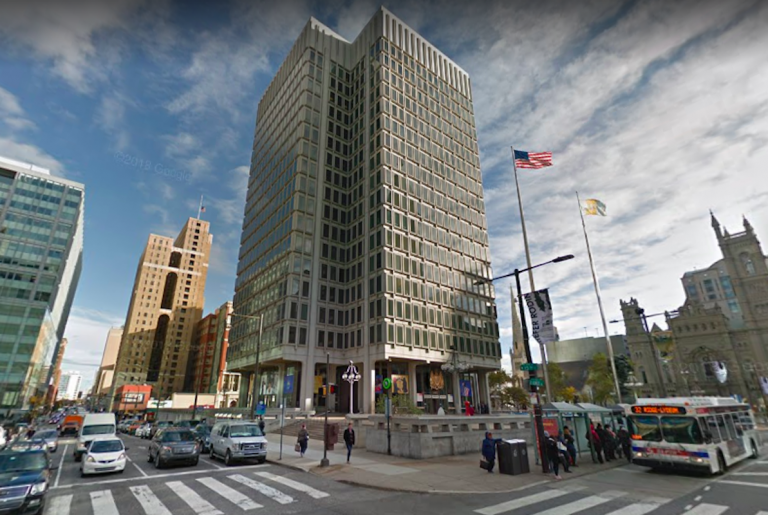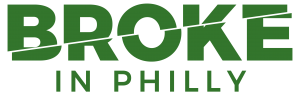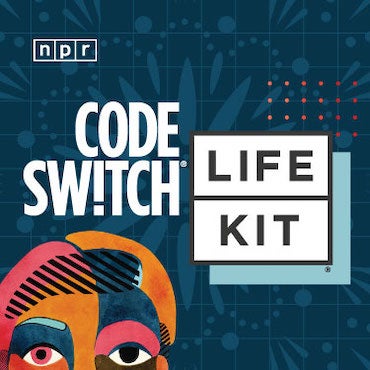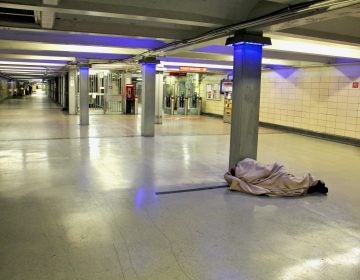This innovative intake system model aims to shorten wait times for social services
Centralized intake systems hinge on collaboration between providers.

The Municipal Services Building in Philadelphia (Google Maps)
This story originally appeared on Generocity.
—
The formula for how the length of wait times for city social services impacts people in need is simple, according to Carlita Owens, a licensed clinical social worker.
When it’s quick, she said, clients are more likely to get better faster. When it strays longer than a few days, the consequences mount: relapse for those with substance use disorder, suicide ideation and more.
“Sometimes, there are just people who are standing outside and having to sit in a waiting room for an extended period of time. For somebody dealing with some type of mental health issue,” said Owens, who works in mental health for the Philadelphia Department of Prisons, “it’s very difficult for them to have all that stimuli around them and waiting for a bed. Or someone who is trying to enter recovery … there may be people around them who are under the influence, and that’s triggering.”
Shortened wait times is one of many goals of centralized intake systems (we’ll call them “c-intake systems” here), which hinge on collaboration between providers.
In Philadelphia, the homeless services, home visiting and legal sectors are all currently developing ways to bring this method to their clients. This summer, the William Penn Foundation even put a $1.3 million price tag on the idea for a centralized referral center for local home visiting providers.
Kathleen Strader is the senior director of operations at the national home visiting organization Healthy Families America (HFA) and oversees 550 affiliate sites, all of which abide by the same application and training requirements. HFA is also one of six members in the National Evidence-Based Home Visiting Model Alliance (NHVMA).
Strader said c-intake systems are relatively new, and internal evaluations are necessary to prove their effectiveness. Over the last few years, though, she said they’ve become more popular within the home visiting sector and across the country because the providers that have the resources to come together realize it can be one of the best ways to serve clients.
“The best services,” Strader said, “all have great intentions for the outcomes we hope to help families achieve, but it is all for naught if we are not successful in actually getting the families in the door. Centralized intake is an avenue to help that initial process be more successful.”
What is a c-intake system?
These systems all require collaboration among service providers, but the way they make referrals and place clients can vary. Here are three models that fall under the umbrella of c-intake systems:
Centralized intake systems
- To receive services, clients access one point — whether it’s a hotline or a physical center — for assessment and a subsequent referral to an appropriate provider.
- The team initially meeting the client may be employees of the providers participating in that centralized intake system or third-party employees.
Coordinated intake systems, or coordinated entry
- Coordinated intake systems differ because the providers within this system collaborate to decide what the best fit is for the client. People’s initial interaction with a coordinated intake system may be a result of communication with an individual provider or a unified outreach effort by them all.
- Owens said she favors systems that allow for a level of conversation and choice between providers.
Collaborative intake systems
- In this system, participants collectively develop materials to distribute to potential clients, who decide themselves what provider they’d like to access.
NHVMA published a report on c-intake systems that included suggestions for providers interested in developing their own.
Before establishing a c-intake system, providers must decide “which of those models might be the best fit within a community,” said Strader, who helped write the report. “Part of what we were wanting them to think about when they were making decisions … is what level of coordination already exists between service providers.”
The state of c-intake systems in Philadelphia
The national trend Strader noted has not skipped Philadelphia, as more and more sectors in the city have taken on this method.
OFFICE OF HOMELESS SERVICES (OHS)
OHS is a veteran: For almost 20 years, it has employed a centralized intake approach for placing people in one of the city’s nearly 5,000 shelter beds, said Roberta Cancellier, the office’s deputy director.
The office has changed its centralized services recently. In 2012, the U.S. Department of Housing and Urban Development (HUD) announced all participants in its nationwide Continuum of Care (CoC) program — including Philadelphia — must establish a coordinated (not just centralized) intake system by January 2018.
Philadelphia’s CoC program was established in 2014. To comply with the top-down order, OHS has developed the Coordinated Entry and Assessment-Based Housing Referral System, or CEA-BHRS for short (employees pronounce the acronym like “sea breeze”).
CEA-BHRS and all other CoC participants across the country must meet a slew of HUD requirements for its coordinated intake process.
Per Cancellier, CEA-BHRS changes include relocating emergency assistance staff to Center City intake center Apple Tree Family Center; adding two youth-specific access points at LGBTQ centers Attic Youth House and Valley Youth House; and distilling the application process for housing to one form.
Adjusting providers and clients to CEA-BHRS has been an intensive process that has spanned over the last several years, said Sara Pagni, the senior program manager of coordinated entry and special projects in OHS. Characteristics of the city, such as its size, have made the process a challenge at times.
“What makes it difficult is the idea that we want to redo something that people are very used to doing and entrenched in doing and may or may not believe that it needs to be redone,” Pagni said. “We’re not redoing things because the way we did it was wrong or bad. It was built a certain way at a certain time for a certain reason, and … it’s just a constant evolution.”
HOME VISITING
That $1.3 million centralized referral system will involve eight home visiting providers, including the Philadelphia Department of Public’s Health Healthy Start Program, Nurse-Family Partnership and Parent-Child Home Program.
[Read our explainer on home visiting programs in Philadelphia: “Home visits from education experts are improving outcomes for Philly kids in poverty.”]
Sara Kinsman is the director of the health departments’s Division of Maternal, Child and Family Health, which received the grant. The first iteration of the centralized referral system will be a hotline that she hopes is launched by next summer.
Kinsman said that the providers will work together to plan the system’s next phases. But they already agree that its final form will allow for family choice, meaning the system’s clients will be included in the decision-making process about which provider seems best for them.
There’s an average of 51 available slots per home visiting program in Philadelphia County, according to a Spring 2018 report on the local home visiting system by United Way of Greater Philadelphia and Southern New Jersey. Kinsman hopes a centralized system better connects providers so they’re serving as many families as possible.
“This system represents a lot of people wanting to come together to make it happen,” she said.
OTHER SECTORS
A number of other providers in Philadelphia are under the umbrella of a c-intake system, or are developing one, including:
- Equal Justice Center — A hub set to open in 2021 that will co-locate about 20 legal organizations
- Philadelphia Domestic Violence Hotline — A 24/7 hotline started in 2005 and run by partners Women Against Abuse, Congreso de Latinos Unidos, Lutheran Settlement House and Women in Transition
- Behavioral Health Special Initiative — Operates under the Office of Addiction Services and refers patients to drug and alcohol providers with the help of Community Behavioral Health and the Office of Mental Health
As a social worker, Owens’ experience with c-intake systems has varied. Some systems seem more efficient; others have flaws that may leave people waiting. The crux of them all, though, is a clear desire to be better social services providers, she said.
Kinsman agreed, noting that more orgs working together “maximizes your impact.”
“You get to also avoid gaps in services,” she added. “We believe we can tailor our services to what our families need, and I’m sure other sectors have that ability, too.”
—
 Generocity is one of 20 news organizations producing Broke in Philly, a collaborative reporting project on solutions to poverty and the city’s push towards economic justice.
Generocity is one of 20 news organizations producing Broke in Philly, a collaborative reporting project on solutions to poverty and the city’s push towards economic justice.
WHYY is your source for fact-based, in-depth journalism and information. As a nonprofit organization, we rely on financial support from readers like you. Please give today.




